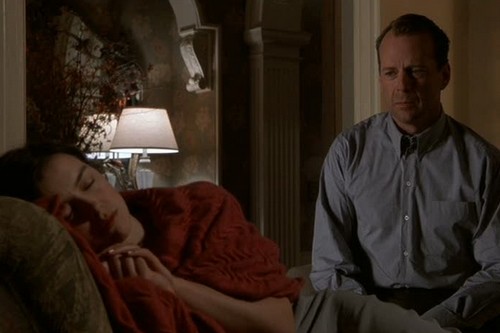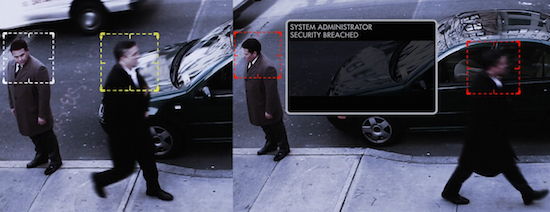THIS: Crash Course
By:
August 1, 2016

I used to think modern humanity was on a motion-strike, standing still on stairwells and city streets to resist the rapid reboots of media overload and the narrowing time-limit of mortality. I thought this all the way back in April. The phenomenon I observed was a solitary reaction — still the product of personal technology, but a rejection of its two-way invasion of everyone’s interior; WiFi and small screens bring the world to us, but merely doing nothing is a protest sealed inside the self.
What’s happening now, already, is different. People waver, not come to a standstill, and the path is not evasive but subconsciously confrontational. I maneuver to avoid colliding with someone ahead of me wandering down the sidewalk slowly as they triangulate their physical presence and the absorbing screen; with vestiges of spatial awareness, the average texter might drift out of the way. But now, every time, the sleepwalker veers in whatever direction I’m going. I haven’t tested the reflex, and I don’t have to; walking with my eyes free (usually), the instinct to shift left when the somnambulist drifts right launches automatically, and with this change of course invariably the person ahead slides back in front of me.
It’s as if their entire body is being swiped left or right to keep one other person from taking precedence; it’s like a totemic reenactment of the magnetic obstruction ritual remembered from Mr. and Ms. Pac-Man’s opposing ghosts. Defensive formations are getting wired into us more these days too — I’ll often also find myself behind a single family or school-group or clique spread out across the whole width of the walkway. This is so none within the group overlook each other, but also invites contention as bodies moving at different speeds inevitably intersect.

The physical is a necessity in foundational cultures and a novelty in more “advanced” ones — millennia of our forebears had no choice but to build shelters and vehicles out of material substances, and travel physically to converse. Decades past the common presence, even existence, of certain modes of communication, newer generations nonetheless crave, seek out and reinvent the tactile — in stylish, textural tomes; inherently flawed and finite vinyl recordings; etc. There’s nothing fundamentally superior about these modes, but the human senses create their own demand.
Invisibility isn’t really everyone’s most-desired superpower, it’s the mortal ego’s greatest fear. A long-time staple of mass culture is the cautionary fantasy of the soul shut off from everyday life, a personality that either doesn’t know it’s dead, or is all too aware of it, and can see but not be noticed by, interact with, or influence the living (from Scrooge’s remorseful bubble of timespace spectating at past and future miseries, to Cartman drawing the logical conclusion that he’s dead when all the South Park kids make a pact to ignore him). “Attention must be paid,” one mantra of midcentury common-personhood went, and missing nothing is the fantasy at the heart of the chase in Pokémon Go.
Americans have always kept their distance from each other, the same way geography graced us with a remove from the rest of the world. Cultures with more crowding or less freedoms tend to have a different model of bodily awareness, like former Communist countries where pedestrians literally bump into each other without necessarily acknowledging each other. The silence comes from an isolation, a hesitancy to speak to anyone you don’t know (or anyone you do know, in public); the bumping, I think, comes from a clandestine impulse to connect.

Isolation is not the trend of American experience, it is the tradition. In a precedent-defying year, some inner voice, deeper than earbuds, is telling us to get in each other’s way. There are walls between us already, of heredity, of belief, and if we can’t willingly come together for fear of the way certain others do see us, maybe we can position ourselves on pathways that are certain, eventually, to collide.
MORE POSTS by ADAM McGOVERN: OFF-TOPIC (2019–2025 monthly) | textshow (2018 quarterly) | PANEL ZERO (comics-related Q&As, 2018 monthly) | THIS: (2016–2017 weekly) | PEOPLE YOU MEET IN HELL, a 5-part series about characters in McGovern’s and Paolo Leandri’s comic Nightworld | Two IDORU JONES comics by McGovern and Paolo Leandri | BOWIEOLOGY: Celebrating 50 years of Bowie | ODD ABSURDUM: How Felix invented the 21st century self | CROM YOUR ENTHUSIASM: C.L. Moore’s JIREL OF JOIRY stories | KERN YOUR ENTHUSIASM: Data 70 | HERC YOUR ENTHUSIASM: “Freedom” | KIRK YOUR ENTHUSIASM: Captain Camelot | KIRB YOUR ENTHUSIASM: Full Fathom Five | A 5-part series on Jack Kirby’s Fourth World mythos | Reviews of Annie Nocenti’s comics Katana, Catwoman, Klarion, and Green Arrow | The curated series FANCHILD | To see all of Adam’s posts, including HiLo Hero items on Lilli Carré, Judy Garland, Wally Wood, and others: CLICK HERE
